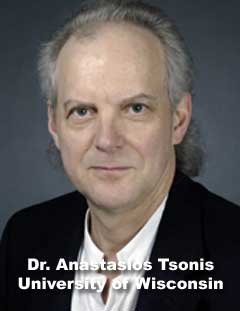As we've noted before, perhaps nothing is more important for future of the Green Supply Chain than overall public perceptions about global warming and potential action or not on regulating carbon emissions by putting a price on them one way or another.
If the global warming movement wanes, for whatever reason, causing companies to put less emphasis on carbon emissions, the Green supply chain will continue to move foreward, but with a different cast.
In that context, with most of the Northern hemisphere suffering through a very cold winter, there appears to be increasing debate about temperature trends.
Last week, professor Mojib Latif, a leading member of the UN’s Intergovernmental Panel on Climate Change (IPCC) and on the research team at the Leibniz Institute at Germany’s Kiel University, presented evidence that rebutted the notion of greenhouse gases driving global climate change.
Latif has developed new methods for measuring ocean temperatures 3,000 feet beneath the surface, where he says global cooling and warming cycles start.
In fact Latif and some colleagues predicted the new cooling trend in a paper published in 2008, warning again about the cooling temperatures globally at an IPCC conference in Geneva last September.
"A significant share of the warming we saw from 1980 to 2000 and at earlier periods in the 20th century was due to these cycles – perhaps as much as 50 percent," Latif told a British newspaper last week.
These ocean cycles "have now gone into reverse, so winters like this one will become much more likely," Latif says. "Summers will also probably be cooler, and all this may well last two decades or longer."
He also predicts that the extreme retreats that there have been in some glaciers and sea ice will come to an end as a result of the cooling trend.
 According to the US National Snow and Ice Data Center in Colorado, Arctic summer sea ice has increased by 409,000 square miles, or 26 per cent, since 2007. This, while others are predicting that North Polar ice might disappear in the summer time in 10 years or less. According to the US National Snow and Ice Data Center in Colorado, Arctic summer sea ice has increased by 409,000 square miles, or 26 per cent, since 2007. This, while others are predicting that North Polar ice might disappear in the summer time in 10 years or less.
Dr. Anastasios Tsonis, head of the University of Wisconsin Atmospheric Sciences Group, agrees.
Tsonis has done research on
"multi-decadal oscillations" (MDOs) in the Atlantic and Pacific oceans. He has recently shown that these MDOs move together in a synchronized way across the globe, abruptly flipping the world’s climate from a "warm mode" to a "cold mode" and back again in 20-30 year cycles.
"They amount to massive rearrangements in the dominant patterns of the weather," Tsonis said last week, adding that "their shifts explain all the major changes in world temperatures during the 20th and 21st centuries." He also predicts 20-30 years of cooler weather.
Tsonis says that from 1940 until the late 1970s, , the last MDO cold-mode era, the world cooled, despite the fact that carbon dioxide levels in the atmosphere continued to rise.
A warming trend was observed in the 1980s and 1990s, which global warming advocates attributed to greenhouse gas emissions. But most agree temperatures stopped rising about a decade ago.
Both Tsonis and Latif say that greenouse gases could play some role in warming, but that they are mostly "background noise" compared to ocean cycles, and not a threat for catastrohic climate change.

TheGreenSupplyChain.com is now Twittering! Follow us at www.twitter.com/greenscm
|